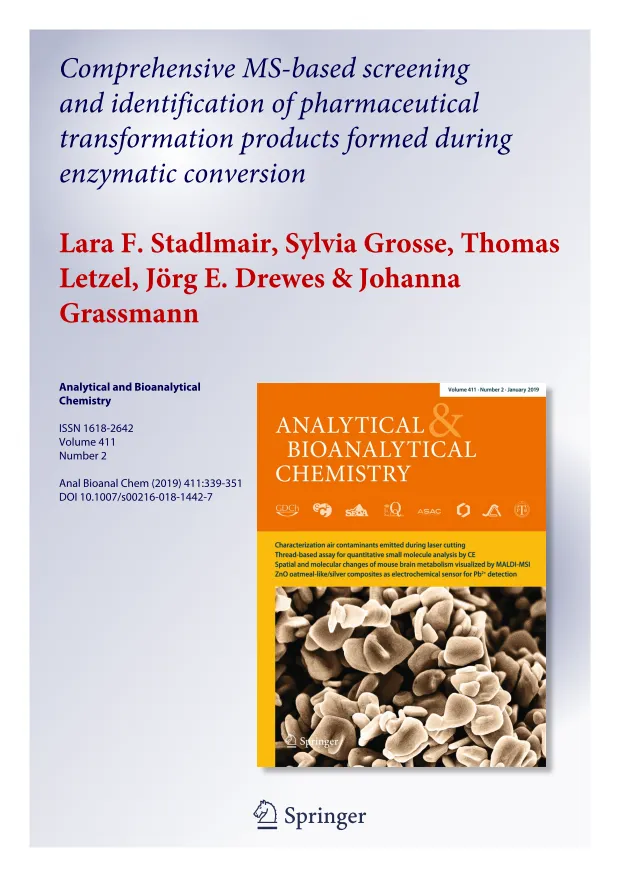In this study, transformation products (TPs) of diclofenac, mefenamic acid, and sotalol derived from peroxidase- and laccase- catalyzed transformations were studied with different mass spectrometry (MS)-based workflows. A straightforward pre- screening of enzymatic degradation rate was performed using a robotic nano-ESI source coupled to single quadrupole MS. Accurate mass data and information on molecular hydrophobicity were obtained from a serial coupling of reversed phase liquid chromatography (RPLC) with hydrophilic interaction liquid chromatography (HILIC) to a time-of-flight-mass spectrometer (ToF-MS). These parameters were combined with fragmentation information from product ion scan operated in enhanced mode (EPI) with precursor selection in Q3 and data from multiple reaction monitoring (MRM) modes using a hybrid triple quadrupole- linear ion trap-mass spectrometer (QqQ/LIT-MS). "Suspect" MRM modes did not provide a significant sensitivity improvement compared to EPI experiments. The complementarity of the data from different MS-based workflows allowed for an increase of identification confidence. Overall, this study demonstrated that dimerization, hydroxylation, and dehydration reactions were the predominant mechanisms found for diclofenac and mefenamic acid during enzyme-catalyzed transformation, whereas a degra- dation product was observed for the peroxidase-catalyzed conversion of sotalol. Results can contribute to understand enzymatic mechanisms and provide a basis for assessing risks and benefits of enzyme-based remediation.
